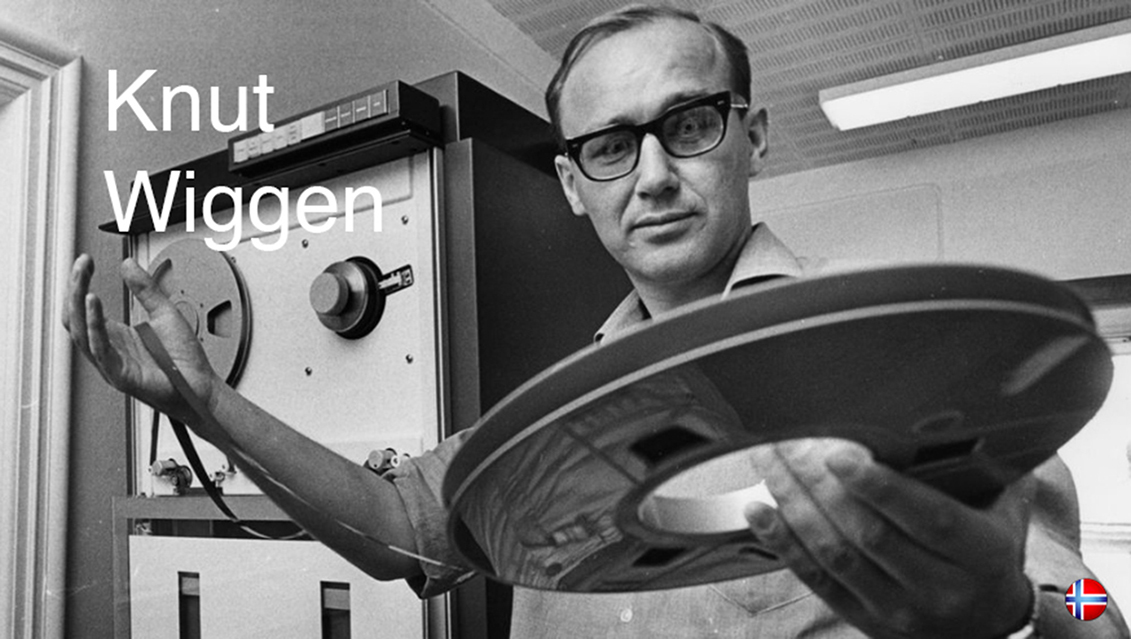EMS - the development of a hybrid studio
In the early 1960s, electroacoustic music faced several challenges – the production time in tape studios was very long, the electronic equipment did not maintain accurate pitch very well, and tape manipulation had its limits as compositional tools. And computers had slowly come into musical use, as tools for algorithmic composition.
Computers were still too slow to calculate actual sound of reasonable complexity quickly enough to be practical tools for sound synthesis, so in order to draw on the new affordances of control, complexity and the possibility for data migration, research in several environments around the planet was pointed towards developing hybrid techniques, combining analog and digital technologies for musical purposes.
Knut Wiggen faced the same challenges, and had intimate knowledge on compositional processes with electronics from his period in Darmstadt. He was convinced that the new studio in Stockholm had to be built technologically on a hybrid basis. Sound equipment in digitally controllable form was not available, and according to Wiggen, EMS developed it’s own electronics at a fraction of the cost of what the available Honeywell-oscillators cost. The EMS sound equipment filled an entire room, and included 24 oscillators, noise generators, ring modulators, reverbs and so on.
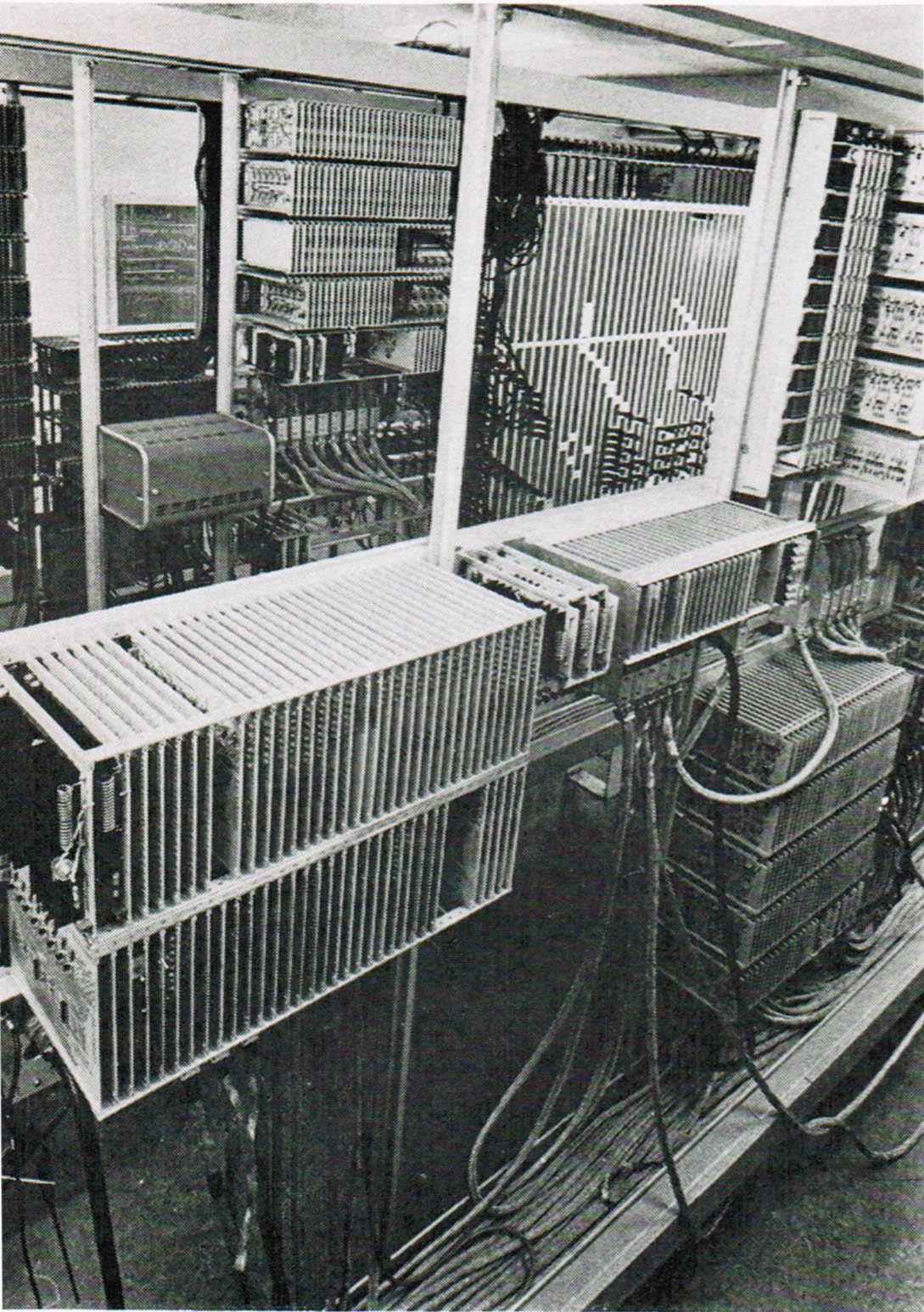
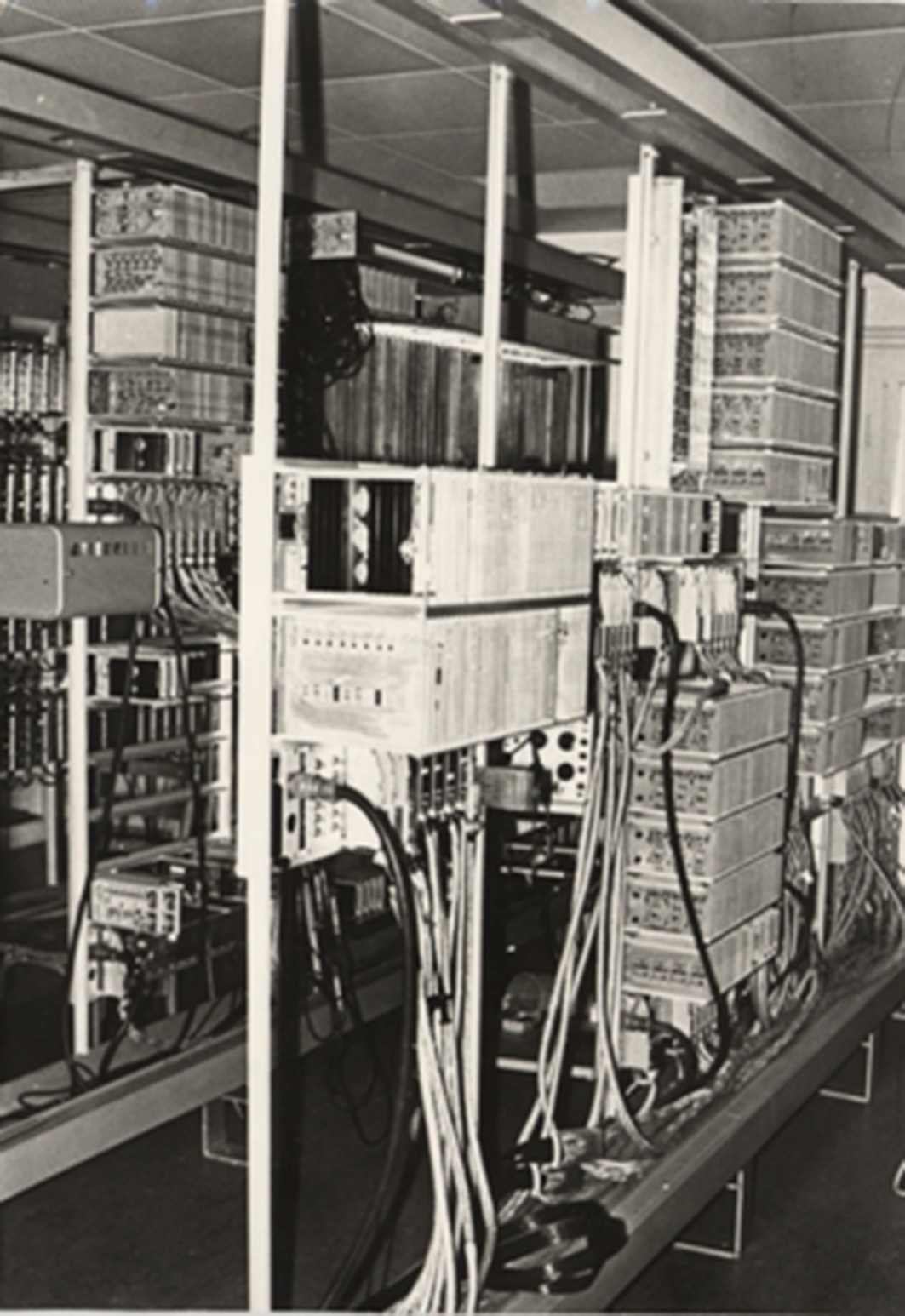
The control issue also needed to be solved, and a 9m long digital control console was built. On the console, all parameters for the sound equipment was laid on the surface, and could be adjusted by opening and closing circuits with a conductive brush made from copper wire. This made it possible to compose and improvise in realtime, and to record the results directly onto one or more of the tape machines in the studio.
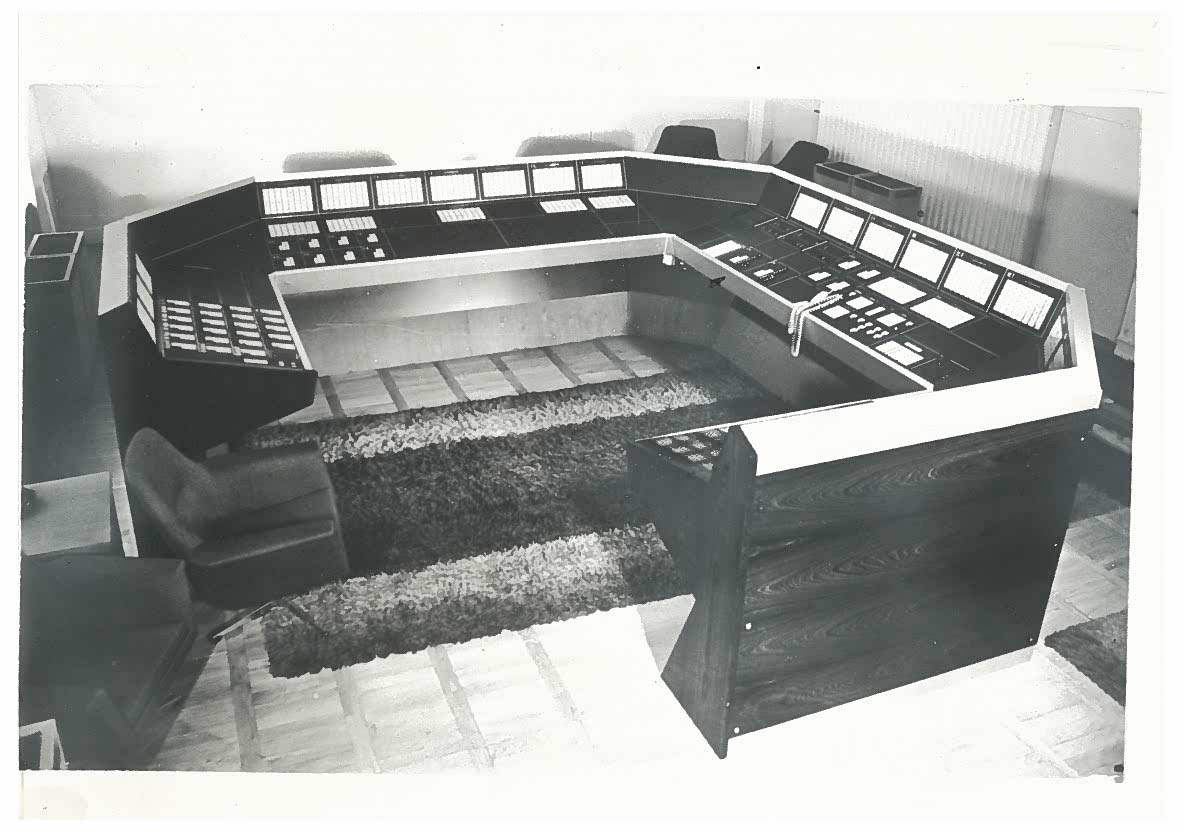
However, more structured work with many parallel parameter changes could be difficult to execute with precision in realtime, and it was attractive to include a computer for quicker, more precise and complex control of the sound equipment. Following experiments with a SAAB computer, EMS purchased a PDP 15/40 computer in 1970, and implemented their own programming languages EMS-0 and EMS-1. These languages were procedural, much along the lines of the early MusicN-langauges, but with the difference that they adressed EMS’ sound equipment, and not computer synthesis.
The PDP-machine calculated the control signals for the sound equipment and stored them on digital tape, and it was from this tape that the piece was being played. As the piece was being played, the control console would light up, and show parameter statuses on the displays. There were limited possibilities to change the digitally stored control signals from the console, but the control console could easily change pieces as they were played from the digital tape.
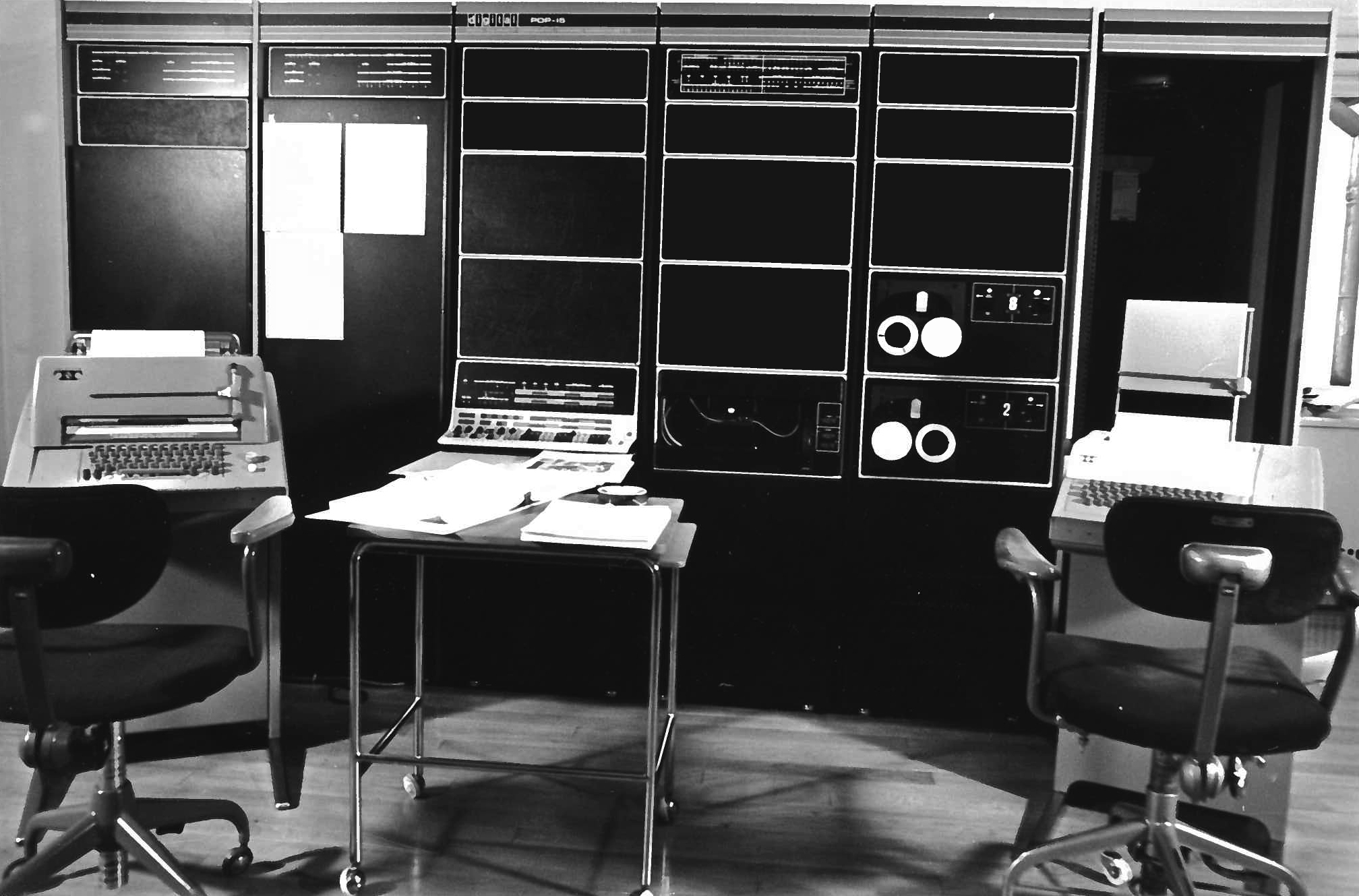 Wiggen however, felt that the EMS languages, as the Music-N languages, were limiting in their conception of instrument and score, and that the structuring that they required tied composers into the traditional interval-based domain. He had early on conceived a new type of composition software that would better draw on the new affordances of the computer for automatization and co-variation of parameters, developed through mathematical means or imported from other disciplines than music. The software completed Wiggen's vision about what was required in order to create a qualitiatively new type of music.
Wiggen however, felt that the EMS languages, as the Music-N languages, were limiting in their conception of instrument and score, and that the structuring that they required tied composers into the traditional interval-based domain. He had early on conceived a new type of composition software that would better draw on the new affordances of the computer for automatization and co-variation of parameters, developed through mathematical means or imported from other disciplines than music. The software completed Wiggen's vision about what was required in order to create a qualitiatively new type of music.
The development of the studio technology at EMS was expensive, and composers from the Swedish Composers' Society were very active in demanding a refocusing of EMS' activities, and when this refocusing on analog tape techniques was decided on a board meeting in 1975, Wiggen redsigned his position and left EMS. But the legacy that Wiggen of EMS as a world leading institution for electroacoustic composition remains.
- Jøran Rudi, 2018.
